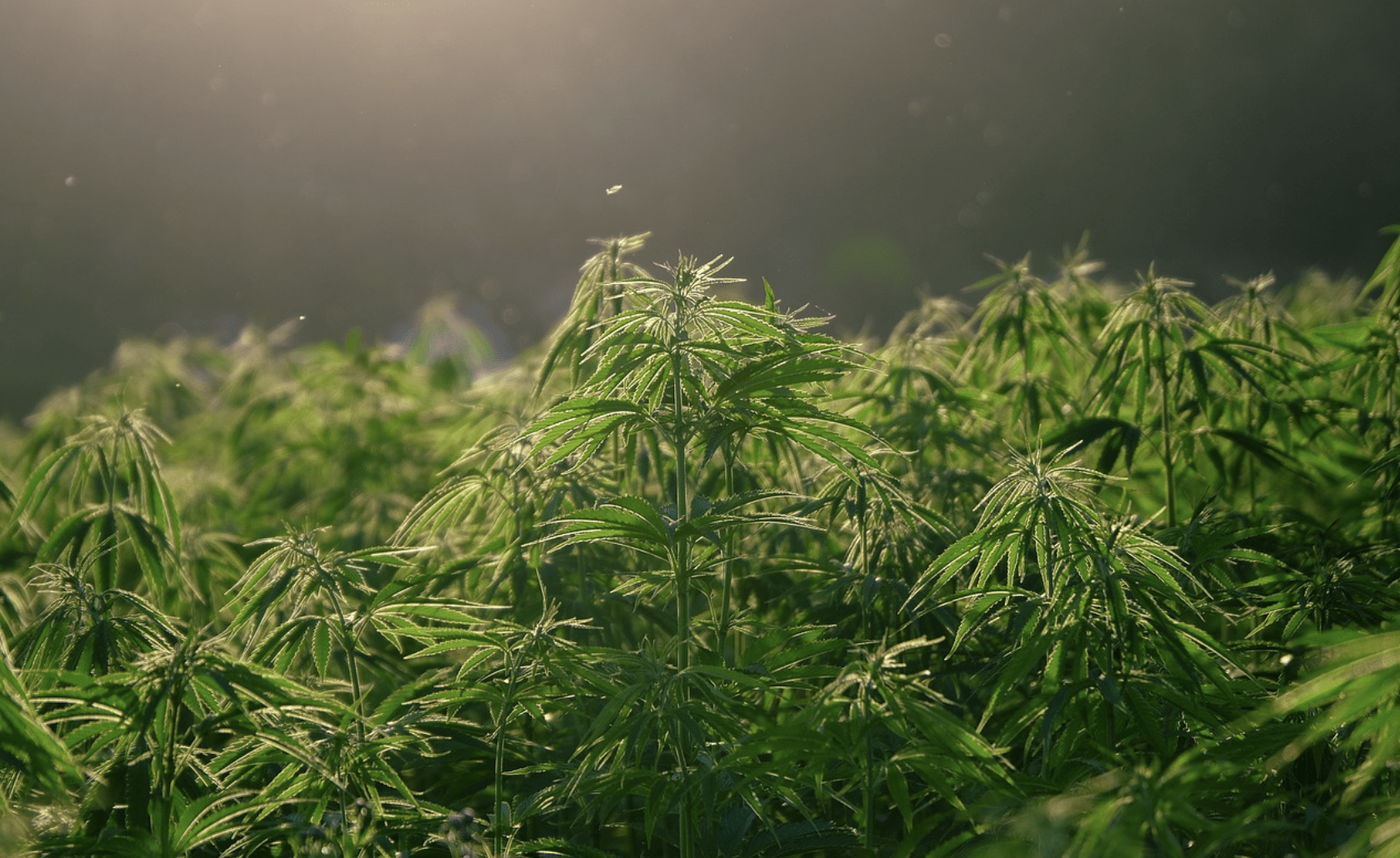Cannabis eBooks
Unlock the Secrets of Cannabis – Cannabis | Weed | Marijuana
Published
2 years agoon
By
admin
Read or download our eBooks
1. How to Grow Cannabis?
This e-book will provide a comprehensive guide for beginners looking to start growing cannabis. It will cover everything from choosing the right cannabis strain to setting up a grow space to caring for and harvesting your cannabis plants. It will also include information about the legal and regulatory aspects of growing cannabis, pests, and disease control, as extracting and processing cannabis.
Click here to read or download the eBook
Footnote(s)
You may like
-


MJBizCon offers speakers chance to share cannabis insights, shape industry
-


The Best Tariff Friendly Cocktails
-


Cannabis Consumers Are Being Hit By The Tariffs
-


The Best Tips To Update Your Wardrobe
-


Former New York Knick Iman Shumpert debuts ‘TSA Approved’ legal cannabis brand
-


How New York pot pioneers made it to legal dispensary shelves
All about Cannabis
How to Grow Cannabis? – Cannabis | Weed | Marijuana
Published
2 years agoon
February 19, 2023By
admin
>> Download e-Book Version <<
Overview of the e-book
This e-book will provide a comprehensive guide for beginners looking to start growing cannabis. It will cover everything from choosing the right cannabis strain to setting up a grow space to caring for and harvesting your cannabis plants. It will also include information about the legal and regulatory aspects of growing cannabis, pests, and disease control, as extracting and processing cannabis.
This e-book is meant merely as an introductory guide. We have listed additional resources for further learning at the back of this e-book.
Benefits of growing your own cannabis
Growing your own cannabis has several benefits, including:
- Cost savings: Growing your own cannabis can save you money in the long run, as you won’t have to purchase cannabis from dispensaries or other sources.
- Quality control: When you grow your own cannabis, you have complete control over the growing conditions, which can lead to higher-quality buds.
- Personalized strains: You can experiment with different strains and growing techniques to find the perfect strains and methods that work for you.
- Privacy: Growing your own cannabis can also provide a sense of privacy, as you won’t have to rely on dispensaries or other sources for your cannabis.
- Connection to nature: Growing your own cannabis can be a rewarding and therapeutic experience. It allows you to connect with nature and appreciate the plant’s life cycle.
- Legal compliance: If you live in a state or country where cannabis cultivation is legal, growing your own cannabis can ensure that you comply with the law.
The legal and regulatory considerations of growing cannabis vary depending on the location and jurisdiction. Here are a few things to keep in mind:
United States

- Federal law: In the United States, cannabis is still considered a Schedule I controlled substance under federal law. This means that it is illegal to cultivate, possess, or distribute cannabis, even in states where it is legal. However, the federal government has adopted a policy of non-interference with state-legal cannabis programs.
- State laws: Some states have legalized cannabis for medical or recreational use, while others have decriminalized possession or have medical cannabis programs. It’s important to check the laws of your state to determine what is legal and what is not.
- Local laws: Some municipalities have enacted their own rules and regulations regarding cannabis cultivation. Before starting to grow cannabis, you should check your local laws to see if there are any additional restrictions or requirements.
- Licensing and permitting: Many states and municipalities require growers to obtain licenses and permits to grow cannabis legally. These requirements vary widely and may include background checks, fingerprinting, and security measures.
- Personal possession limits: Some states and municipalities limit how much cannabis an individual can possess or grow. It’s essential to check your local laws to see what the limits are in your area and to make sure you comply.
Canada

In Canada, the cultivation of cannabis is legal for both medical and recreational use under the Cannabis Act, which came into effect in October 2018. However, there are still some legal and regulatory considerations to keep in mind:
- Possession limits: Adults in Canada can legally possess up to 30 grams of dried cannabis in public. However, possession limits may vary in some provinces, so it’s important to check the laws of your province.
- Growing limits: Adults can grow up to four cannabis plants per residence (not per person) for personal use. However, some provinces and municipalities have their own regulations, so it’s important to check the laws of your province and municipality.
- Licensing and permit: To grow cannabis for commercial purposes, you require a license from Health Canada.
- Age limits: The minimum age to buy, possess, and cultivate cannabis in Canada is 18. However, some provinces have set the minimum age to 19.
- Public consumption: Public consumption of cannabis is illegal in Canada, and each province and territory has its own regulations regarding where to consume cannabis.
- Advertising and packaging: There are strict regulations on advertising, packaging and labelling of cannabis products. It’s important to familiarize yourself with these regulations before growing.
- Medical use: Patients with medical authorization from a healthcare practitioner can possess and grow more cannabis than recreational users, but they still need to comply with the laws and regulations.
- Sharing and gifting: Giving or sharing cannabis with a minor is illegal and can result in severe penalties.
Europe

The legal and regulatory considerations of growing cannabis in Europe vary depending on the country and jurisdiction.
- Medicinal use: Some European countries have legalized cannabis for medical purposes. However, the laws and regulations vary widely among countries and regions. Some countries have a national program, while others rely on individual prescriptions.
- Recreational use: The possession, cultivation, and sale of cannabis for recreational use remain illegal in most European countries. However, some countries, such as the Netherlands and Spain, have decriminalized possession of small amounts of cannabis and have a tolerance policy towards its use in certain areas.
- Possession limits: Possession limits vary among countries and regions. For example, in Spain and Portugal, possessing small amounts of cannabis for personal use is considered a minor infraction. In the Netherlands, possession of up to 5 grams is allowed.
- Growing limits: Growing cannabis for personal use is illegal in most European countries and can result in severe penalties.
- Licensing and permitting: Cultivating cannabis for commercial purposes is illegal in most European countries, and no licenses or permits are available.
- Public consumption: Public consumption of cannabis is illegal in most European countries and can result in fines or penalties.
- Advertising and packaging: There are strict regulations on advertising, packaging and labelling of cannabis products. It’s important to familiarize yourself with these regulations before growing cannabis.
- Import and export: Importing or exporting cannabis is illegal in most European countries and can result in severe penalties.
Choosing a Cannabis Strain

Understanding the different types of cannabis
There are different types of cannabis:
- Cannabis sativa: This type of cannabis is known for its tall, thin plants with narrow leaves. Sativa strains are uplifting and energizing, and consumers often use them during the day. They produce a more cerebral and energizing high, which can help with creativity, focus, and sociability.
- Cannabis indica: This type of cannabis is known for its short, bushy plants with wide leaves. Indica strains are generally relaxing and sedating; people often use them at night. They produce a more body-centered high, which can help with relaxation, sleep, and pain relief.
- Cannabis ruderalis: This type of cannabis is a wild or feral type of cannabis. It is a small, low-THC plant in Eastern Europe and Russia. It is not as well-known as the other two types, and consumers don’t commonly use it for recreational or medical purposes. Still, it is considered a genetic resource for breeding auto-flowering cannabis strains.
- Hybrid: This type of cannabis is a crossbreed between different strains of cannabis sativa and indica. Hybrids can combine the characteristics of both sativa and indica strains. Growers can breed them with desired traits such as increased yield, improved taste or aroma, or higher THC or CBD content.
It’s also important to note that within each category are various subcategories and strains, each with unique characteristics and effects. The genetic makeup of each strain will determine the plant’s growth pattern, the colour of the buds, the aroma, the taste, and the overall effect.
Indica vs. Sativa vs. Hybrid
Indica strains:
- Indica strains are known for their short, bushy plants with wide leaves.
- They are generally lower in height and have a shorter flowering period than Sativa strains.
- Indica strains produce a more relaxing and sedating high, which can help with relaxation, sleep, and pain relief.
- Different indica strains contain varying levels of CBD (cannabidiol) compared to THC (tetrahydrocannabinol)
- Commonly used for treating insomnia, chronic pain, muscle spasms, and anxiety.
Sativa strains:
- Sativa strains are known for their tall, thin plants with narrow leaves.
- They are generally taller and have a longer flowering period than Indica strains.
- Sativa strains produce a more uplifting and energizing high, which can help with creativity, focus, and sociability.
- Different sativa strains contain varying levels of THC compared to CBD.
- Commonly used for treating depression, fatigue, and lack of appetite.
Hybrid strains:
- Hybrid strains are a crossbreed between different strains of cannabis sativa and indica.
- Depending on the genetic makeup, they can combine the characteristics of both sativa and indica strains.
- Growers can breed them with desired traits such as increased yield, improved taste or aroma, or higher THC, CBD, and other cannabinoid content.
- They can have many effects, from energizing and uplifting to relaxing and sedating.
It’s important to note that these are general characteristics and that the effects of a specific strain can vary depending on the individual, the dosage, and the method of consumption. Also, remember that breeding practices and naming conventions can vary from seed bank to seed bank, so there may be some variation in the effects and characteristics of strains labeled as Indica, Sativa, or Hybrid strains.
Choosing the right cannabis strain for your needs
Choosing the right cannabis strain for your needs can be a bit of a trial-and-error process, but there are a few things to consider that can help narrow down your options:
- Purpose: The first step is determining what you want to use cannabis for. Are you looking for relief from chronic pain, anxiety, or insomnia? Are you looking for something to help with focus and creativity? Understanding what you hope to gain from using cannabis can help you identify which strains may be best suited for your needs.
- Genetics: Once you have a general idea of what you’re looking for, you can start to narrow down your options by looking at the genetics of different strains. Indica strains, for example, are known for their relaxing and sedating effects. In contrast, Sativa strains are known for their uplifting and energizing effects. Hybrid strains can have a combination of both effects, depending on the genetic makeup.
- THC and CBD content: The next step is to consider the THC and CBD content of the strains. THC is the psychoactive compound that produces the “high” associated with cannabis use. At the same time, CBD is a non-psychoactive compound known for its medicinal properties. Some strains are higher in THC and lower in CBD, while others are higher in CBD and lower in THC.
- Aroma and Flavor: Some strains have specific aroma and flavor profiles which can greatly impact the experience of consuming cannabis. If you are sensitive to the smell or taste of cannabis, this is something to consider when choosing a strain.
- Grow characteristics: Some strains are more difficult to grow than others, which is something to consider if you’re planning on growing your own cannabis. Some strains are more prone to mold or pests, while others are more resistant.
- Personal preference: Finally, it’s important to remember that the effects of a strain can vary depending on the individual, so it’s important to consider your personal preferences and experiences.
Setting Up Your Cannabis Grow Space

Choosing the right location
Choosing the right location for your cannabis to grow space is important in growing your own cannabis. Here are a few things to consider when selecting a location:
- Light: One of the most important factors for growing cannabis is having access to the right amount of light. Cannabis plants need a lot of light to grow, so it’s important to find a location with plenty of natural light. A south-facing window or a grow tent with artificial lights are good options.
- Temperature: Cannabis plants prefer temperatures between 70-85°F (21-29°C) during the day and 60-70°F (15-21°C) at night. It’s important to find a location to maintain these temperatures, especially during the flowering stage.
- Humidity: Cannabis plants prefer humidity levels between 40-60%. The plants may become dry and stressed if the humidity is too low. The plants may be more susceptible to mold and mildew if the humidity is too high.
- Ventilation: Good ventilation is important to keep your plants healthy and prevent mould and mildew. Make sure your location has good airflow, and you can exhaust the hot air and bring in the fresh air.
- Security: Growing cannabis can be a sensitive topic, and it’s important to consider your growing space’s security. Make sure to keep your plants in a private and secure location where others can’t see them.
- Legal considerations: It’s important to check the laws and regulations of your area before setting up a grow.
Building and outfitting your grow space
Building and outfitting a cannabis grow space can be a bit of a process. Still, with the right planning and equipment, it can be a rewarding experience. Here are a few steps to consider when building and outfitting your cannabis grow space:
- Choose a location: As mentioned earlier. Choosing a location with the right amount of light, temperature, humidity, and ventilation is important. A spare room, a closet, or a grow tent are all good options for a grow space.
- Build your grow space: Depending on your chosen location, you may need to modify the space to create the right environment for your plants. This could include installing lights, building a grow tent, or adding insulation to a room.
- Choose the right equipment: You will need a few key pieces of equipment to set up your growing space. This includes:
- Lights: You will need a light source to give your plants the energy they need to grow. HID (high-intensity discharge) lights, LED lights, or CFL (compact fluorescent) lights are all popular choices.
- Grow medium: You will need a grow medium to hold your plants. Soil, coco coir, or hydroponics systems are all popular options.
- Watering system: You will need a way to water your plants. A watering can, a watering wand, or a drip irrigation system are all good options.
- Ventilation: You will need a way to exhaust hot air and bring in the fresh air. This could include a fan, an air conditioning unit, or a dehumidifier.
- Pest control: Having a way to control pests is important for maintaining the health of your plants. Insecticides, sticky traps, or beneficial insects are all options.
- Add nutrients: Your plants will need nutrients to grow. You can add these to the water or the soil. A good quality fertilizer will provide your plants with the necessary macro and micronutrients they need to grow healthy.
- Monitor and maintain: Once you have your grow space set up, it’s important to monitor your plants regularly to ensure they are healthy and getting the right amount of light, water, and nutrients. This includes checking the pH levels of the soil or water, monitoring temperature and humidity, and checking for pests or diseases.
Lighting, ventilation, and temperature control
Lighting, ventilation, and temperature control are all critical factors in growing cannabis. Here’s a more detailed explanation of each:
- Lighting: Adequate lighting is essential for cannabis growth. Cannabis plants need a lot of light to grow, and the right spectrum of light will determine the rate of photosynthesis, affecting the plant’s health, growth, and yield. The most common light sources used in growing cannabis are HID (high-intensity discharge), LED, and CFL (compact fluorescent) lights. It’s important to remember that cannabis plants have different light requirements during different stages of growth, so it’s important to adjust the light accordingly.
- Ventilation: Good ventilation is important to keep your plants healthy and prevent mold and mildew. Cannabis plants release a lot of moisture during the growing process, so it’s important to have a way to remove that moisture from the growing space. You can use a fan or air conditioning to bring fresh air and remove hot air.
- Temperature control: Temperature control is also an important factor in growing cannabis. Cannabis plants prefer temperatures between 70-85°F (21-29°C) during the day and 60-70°F (15-21°C) at night. It’s important to monitor the temperature in your grow space and make adjustments to keep your plants healthy. High temperatures can lead to stress and slow growth, while low temperatures can lead to mold and mildew.
By providing the right lighting, ventilation, and temperature control, you can create an optimal environment for your cannabis
What are Clones?
Cannabis plant clones are exact genetic copies of a parent plant. They are created by taking a cutting from a mature female cannabis plant and rooting it to create a new plant. The new plant will be genetically identical to the parent plant. It will have the same characteristics, including growth habits, yield, and potency.
Clones are usually female, as most commercial cannabis cultivation focuses on producing buds, which female plants produce. Clones are a preferred cultivation method for commercial growers, allowing them to produce a consistent crop with predictable yields and characteristics.
How to take a clone?
To take a clone, you would need to select a healthy and mature female plant and use a sharp and clean cutting tool to take a cutting from the mother plant. The cutting should have at least 2-3 nodes (sets of leaves) and must be placed in a rooting hormone and then in a rooting medium (such as rock wool, soil, or water) to encourage root growth.
Once the cutting has developed roots, you can transplant it into a growing medium. It will grow into a new identical cannabis plant.
We often use clones in hydroponic systems and indoor cannabis grow rooms, as they allow the growers to control the environment and produce plants genetically identical to the mother plant. However, it’s important to note that clones can be more susceptible to disease and pests than seed-grown cannabis plants.
Seeds vs Clones
Both growing cannabis from seeds and growing from clones have their own set of advantages and disadvantages.
Growing Cannabis from seeds:
- Advantages:
- Cannabis Seeds are easy to obtain, and you can select from various cannabis strains.
- Growing from a cannabis seed allows you to create a diverse genetic pool, which is useful for breeding or creating new cannabis strains.
- Seed-grown cannabis plants tend to be hardier and more resilient than clone-grown cannabis plants.
- Disadvantages:
- Germinating cannabis seeds can be more difficult than taking the clones, and not all seeds will germinate.
- It can take longer for seed-grown cannabis plants to reach maturity and begin flowering.
- You cannot assume a plant’s gender until the pre-flowering stage; some may turn out to be males, which is not useful for flower production.
Growing cannabis from clones:
- Advantages:
- Clones are exact genetic copies of the parent plant, which means you know exactly what you are getting in terms of growth habits, yield, and potency.
- You can take clones from a mature cannabis plant, which means they will begin to flower sooner than seed-grown cannabis plants.
- Clones are usually female, so you don’t have to worry about male plants.
- Disadvantages:
- Clones can be difficult to obtain, and the selection of cannabis strains may be limited.
- Clones can be more susceptible to disease and pests than seed-grown cannabis plants.
- Clones can be more delicate and may not have the same level of resilience as seed-grown cannabis plants.
In general, growing from a cannabis seed is more versatile, but it is also more unpredictable. Growing from clones is more predictable, but it is also more limited. Ultimately, the choice will depend on your preference and experience.
How to germinate cannabis seeds
If you go the seed route, you’ll have to germinate the seeds. There are several methods for germinating cannabis seeds, including:
- Paper towel method: This method involves placing the cannabis seeds between damp paper towels in a warm and dark place until the seeds sprout. Once the taproot appears, you can plant the seeds in soil or another growing medium.
- Direct soil method: This method involves planting the cannabis seeds directly into the soil or another growing medium and then keeping the soil moist until the seeds sprout.
- Rockwool method: This method involves placing the seeds in rockwool cubes, which are made of compressed rock fibres, and then keeping the cubes moist until the seeds sprout.
Regardless of the method chosen, there are a few key things to keep in mind:
- The temperature should be warm, around 70-90°F (21-32°C)
- The humidity should be high, around 80-90%
- You should keep the seeds in a dark place until taproots appear
- The seeds should be kept moist but not soaking wet to avoid mould.
Not all cannabis seeds will germinate; some may be old, damaged or low quality, so it’s recommendable to germinate more than the needed number of cannabis plants.
Plant Care and Maintenance

Watering and feeding cannabis plants
Watering and feeding cannabis plants are important steps in maintaining the health and growth of your plants. Here’s a general overview of how to water and feed cannabis plants:
Watering:
- The amount of water your plants need will depend on the plant’s size, the medium you’re using, and the humidity and temperature in your grow space.
- It’s important to keep the soil or medium consistently moist, but not waterlogged.
- Staying your finger in the soil or medium is a good way to check if your cannabis plants need water. If it feels dry, it’s time to water. If the soil or medium is too wet, wait for it to dry before watering again.
- When watering, it’s important to use water that is at room temperature and to avoid getting water on the leaves or buds.
Feeding:
- Feeding your cannabis plants is important to provide them with the necessary macro and micronutrients they need to grow healthy.
- Most cannabis fertilizers come in two parts: a grow formula and a bloom formula. The grow formula is used during the vegetative stage, while the bloom formula is used during the flowering stage.
- It’s important to follow the instructions on the fertilizer package and not overfeed your cannabis plants, as this can lead to nutrient burn.
- In addition to providing the cannabis plants with the required nutrients, you can add beneficial microorganisms such as mycorrhizae and bacteria to the soil to improve nutrient uptake and overall plant health.
It’s important to monitor your cannabis plants and their needs closely, as the watering and feeding schedule may vary depending on factors such as the size of the cannabis plants, the stage of growth and the environmental conditions. Regularly checking the pH level of the soil or water is also important.
Pruning and training cannabis plants
Pruning and training cannabis plants are important techniques for promoting healthy growth and increasing yield. Here’s a general overview of how to prune and train cannabis plants:
Pruning:
- Pruning is the process of removing dead or dying leaves, branches, or buds from the cannabis plant.
- You can prune at any growth stage, but it’s particularly important during the vegetative stage.
- You prune to improve air circulation, light penetration, and overall plant health.
- Removing the fan leaves and dead foliage will also help the cannabis plant to focus its energy on the buds and flowers.
Training:
- Training manipulates the plant’s shape and growth pattern to optimize yield and light exposure.
- Several techniques are used to train cannabis plants, such as LST (Low-Stress Training), ScroG (Screen of Green), and topping.
- LST involves bending the plant branches to expose more of the lower buds to light.
- ScroG involves using a screen to hold the plant’s branches in a horizontal position and exposing the buds on the plant’s lower branches to light.
- Topping is the process of cutting the top of the cannabis plant to promote bushier growth.
- Training your cannabis plants can help to improve yield and light exposure. It will also help reduce the plants’ height, making them more manageable and easier to maintain.
It’s important to remember that cannabis plants have different needs during different stages of growth, so it’s important to adjust your pruning and training schedule accordingly. It’s also important to closely monitor your cannabis plants and their needs, as over-pruning or over-training can stress the plants and lead to reduced growth and yield.
Pest and disease control
Pest and disease control are important considerations in growing cannabis. Here’s a general overview of some common pests and diseases and how to control them:
Pest control:
- Common cannabis pests include spider mites, thrips, whiteflies, and aphids.
- These pests can cause damage to the leaves and buds and can also spread disease.
- To control pests, you can use insecticides or miticides or release beneficial insects, such as ladybugs or parasitic wasps, into the grow space.
- It’s also important to keep the grow space clean and debris-free, as this can attract pests.
Disease control:
- Common cannabis diseases include powdery mildew, botrytis, and fusarium.
- These diseases can cause damage to the leaves, buds, and roots.
- To control diseases, you can use fungicides, maintain good air circulation, keep the humidity levels in check, and avoid overcrowding your cannabis plants.
Prevention is key when it comes to disease and pest control. It’s important to maintain a clean and well-ventilated grow space, keep humidity levels in check, avoid overcrowding the plants, and not overwater or over-fertilize.
It’s important to remember that cannabis laws vary from state to state and country to country, so you should check your local laws and regulations before using any pesticides or fungicides in your grow space. Additionally, it’s important always to follow the instructions on the product labels when using any chemical control methods.
Harvesting and Processing the Cannabis Plants

Timing your harvest
Timing your cannabis harvests is an important step in growing cannabis. Here’s a general overview of how to time your harvests:
- Understanding the growth stages: Cannabis plants have different needs during different stages of growth. The vegetative stage is when the cannabis plant grows leaves and stems, while the flowering stage is when the plant produces buds.
- Identifying the trichomes: Trichomes are small, hair-like structures on the buds of the cannabis plant that contain the majority of the plant’s THC, CBD, and other cannabinoids. You can use a microscope or a magnifying glass to examine the trichomes and determine when the buds are ready for harvest. As trichomes turn from clear to cloudy, it’s a sign that the cannabis plant is mature and ready for harvest.
- Harvest timing: Harvest timing depends on the cannabis strain you are growing, but most cannabis strains are ready to harvest after 8-12 weeks of flowering. Indica strains tend to be ready for harvest earlier than sativa strains.
- Harvesting the buds: When they are ready for harvest, it’s important to cut them from the plant with a pair of scissors or pruning shears. It’s best to do this in the morning when the humidity levels are low and to handle the buds gently to avoid damaging them.
It’s important to note that cannabis laws vary from state to state and country to country, so you should check your local laws and regulations before harvesting your cannabis. Additionally, it’s important to monitor your cannabis plants and their needs closely, as over-harvesting or under-harvesting can affect the quality and yield of your buds.
Trimming and drying your cannabis buds
Trimming and drying cannabis buds is an important step in growing cannabis. Here’s a general overview of how to trim and dry your buds:
Trimming
- Trimming is the process of removing the leaves from the buds.
- Some prefer to trim the cannabis buds when they are dry, while others prefer a “wet” trim. Whatever makes removing the leaves easier for you.
- You can trim the buds by hand with a sharp pair of scissors or pruning shears, or you can use a bud trimmer machine.
Drying:
- Drying removes moisture from the cannabis buds to make them ready for consumption.
- The drying process should occur in a dark, well-ventilated area with low humidity and a temperature between 60-70°F (15-21°C).
- Hang the cannabis buds upside down from strings or a drying rack, or place them on a mesh screen.
- The drying process can take anywhere from a few days to a few weeks, depending on the humidity and temperature of the grow space.
- Once the cannabis buds are dry, you can store them in airtight containers in a cool, dark place.
It’s important to note that the drying process is important for preserving the cannabis buds and getting the right moisture level. If the buds are not dry enough, they may develop mould or mildew. If they are too dry, they may lose potency or taste. It’s important to handle the cannabis buds gently during the trimming and drying process to avoid damaging them.
Extracting and processing your cannabis
There are several ways to extract and process cannabis that you have grown, including:
- Dry Sift: This method involves using a series of screens to separate the trichomes (the resin glands that contain the majority of the plant’s active compounds) from the rest of the plant material.
- Ice Water Extraction: This method involves freezing cannabis buds and then agitating them in a container of ice water. The trichomes will break off and can be collected and pressed into a “hash” or “kief.”
- Solvent Extraction: This method involves using a solvent, such as ethanol or butane, to extract the active compounds from the plant material. The solvent is then evaporated, leaving behind a concentrated extract.
- CO2 Extraction: This method involves using high pressure and extremely low temperatures to extract the active compounds from the plant material using carbon dioxide as a solvent.
Once you extract the cannabis, it can be further processed into various products such as oil, wax, shatter, and more.
It’s important to note that some of the above methods require specific equipment and experience. Also, some methods, like solvent extraction, must be handled cautiously as solvents are flammable and can be dangerous if not handled properly.
Conclusion
To sum up, growing cannabis involves several steps, including:
- Germinating seeds: This involves starting the growth process by placing cannabis seeds in a warm, humid environment until they sprout. (Alternatively, you can use a clone.)
- Vegetative stage: Once the cannabis seeds have sprouted, you move them to a growing area with appropriate light, temperature, humidity, and nutrient levels. The cannabis plants will grow leaves and branches during this stage.
- Flowering stage: Once the cannabis plants have reached a certain size and maturity, you induce them to enter the flowering stage by reducing the amount of light they receive each day. This will cause the plants to produce buds containing most of the active compounds.
- Harvesting: Once the cannabis buds have reached maturity, they are harvested, dried, and cured.
- Processing: After you harvest the cannabis plants, they are processed to extract the active compounds, which you can use to make various products such as oil, wax, shatter, etc.
Growing your own cannabis can have several benefits, including:
- Cost savings: Growing your own cannabis can save you money in the long run, as you won’t have to pay for the cost of purchasing it from a dispensary or dealer.
- Control over quality: When you grow your own cannabis, you have control over the quality and purity of the plant, ensuring that you are consuming a safe and high-quality product.
- Customization: Growing your own cannabis allows you to customize the strain and growing conditions to suit your personal preferences and needs.
- Self-sufficiency: Cultivating your own cannabis can give you a sense of self-sufficiency and accomplishment.
- Legalization: In some places, growing your own cannabis is legal and regulated, making it an easy, cost-effective option. And a safer option if you don’t trust the black or legal markets.
Additional resources for further learning
Here is the list of books that pair well with this e-book if this is a hobby you’d like to get into deeper.
Footnote(s)

MJBizCon offers speakers chance to share cannabis insights, shape industry

The Best Tariff Friendly Cocktails

Cannabis Consumers Are Being Hit By The Tariffs

The Best Tips To Update Your Wardrobe

Former New York Knick Iman Shumpert debuts ‘TSA Approved’ legal cannabis brand

How New York pot pioneers made it to legal dispensary shelves

Scientists Now Think That One Compound in the Cannabis Plant Can Replace All Opiates

Vladimir Bautista is leading Happy Munkey’s legacy-to-legal takeover

Cannabis Can Help A Sore Throat

Cannabis and the Authoritarian State

Distressed Cannabis Business Takeaways – Canna Law Blog™

United States: Alex Malyshev And Melinda Fellner Discuss The Intersection Of Tax And Cannabis In New Video Series – Part VI: Licensing (Video)

What you Need to Know

Drug Testing for Marijuana – The Joint Blog

NCIA Write About Their Equity Scholarship Program

It has been a wild news week – here’s how CBD and weed can help you relax

Cannabis, alcohol firm SNDL loses CA$372.4 million in 2022

A new April 20 cannabis contest includes a $40,000 purse

Your Go-To Source for Cannabis Logos and Designs

UArizona launches online cannabis compliance online course
Trending
-

 Cannabis News2 years ago
Cannabis News2 years agoDistressed Cannabis Business Takeaways – Canna Law Blog™
-

 One-Hit Wonders2 years ago
One-Hit Wonders2 years agoUnited States: Alex Malyshev And Melinda Fellner Discuss The Intersection Of Tax And Cannabis In New Video Series – Part VI: Licensing (Video)
-

 Cannabis 1012 years ago
Cannabis 1012 years agoWhat you Need to Know
-

 drug testing1 year ago
drug testing1 year agoDrug Testing for Marijuana – The Joint Blog
-

 Education2 years ago
Education2 years agoNCIA Write About Their Equity Scholarship Program
-

 Cannabis2 years ago
Cannabis2 years agoIt has been a wild news week – here’s how CBD and weed can help you relax
-

 Marijuana Business Daily2 years ago
Marijuana Business Daily2 years agoCannabis, alcohol firm SNDL loses CA$372.4 million in 2022
-

 California2 years ago
California2 years agoA new April 20 cannabis contest includes a $40,000 purse










